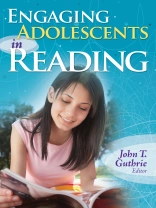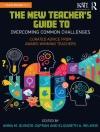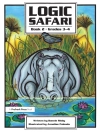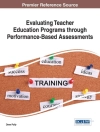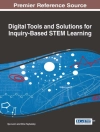’A must-read for all middle and high school teachers interested in motivating and engaging their students to enhance their reading development and help them enjoy it at the same time.’
—Lesley M. Morrow, Professor of Literacy
Rutgers University
’This rich compendium of information offers a solid plan of action for teachers who want to ensure that their students are highly motivated literacy learners.’
—Linda B. Gambrell, Distinguished Professor of Education
Clemson University
Inspire learners′ passion for reading!
Every day, secondary school teachers face the challenge of engaging students in essential reading tasks. This accessible text links key instructional practices with current research on reading motivation, engagement, and classroom context to help reluctant learners become active readers.
Featuring contributions from content teachers working in collaboration with reading researcher John T. Guthrie, Engaging Adolescents in Reading offers examples that vividly illustrate how motivation looks from the teacher′s vantage point and how students can experience deep reading engagement. The writers discuss teaching frameworks, student activities, and textbooks, and demonstrate how to use classroom-tested motivational approaches. This insightful book shows educators how to:
- Infuse reading assignments with significance and meaning
- Present choices that encourage students to take charge of their learning
- Tap into adolescents′ social natures through group activities
- Build proficiency and confidence in struggling readers
With examples from the content areas, these strategies help teachers increase adolescents′ engagement with texts and boost their reading enjoyment.
Spis treści
Preface
Acknowledgments
About the Editor
About the Contributors
1. Reading Motivation and Engagement in Middle and High School: Appraisal and Intervention – John T. Guthrie
Dilemmas of Students’ Motivation and Engagement in School Reading
Challenge: Teacher Support for Motivation and Engagement
Meaning Is Motivating: Classroom Goal Structures
Control and Choice: Supporting Self-Directed Reading
Reading Is Social: Bringing Peer Interaction to the Text
Self-Efficacy: Building Confident Readers
Interest in Reading: Potency of Relevance
Struggling Readers: Boosting Motivation in Low Achievers
Merging Engagement Support Into Structured Classroom Management
Next Steps: Transforming Classrooms and Schools
2. Meaning Is Motivating: Classroom Goal Structures – Jessica E. Douglas, John T. Guthrie
Providing Mastery Goals
Making Tasks Relevant
Using Hands-On Activities
Mastery vs. Performance Motivation: Theory and Research
Transforming Text to Meaning
Scaffolding Mastery Motivation
Providing Reteach Opportunities
Rewarding Effort Over Performance
3. Control and Choice: Supporting Self-Directed Reading – Sarah Fillman, John T. Guthrie
Providing Control and Choice in Instruction
Overview of Instructional Practices
Ownership of Text
Options for How to Learn From Text
Input Into Curriculum
Student Self-Direction and Shared Control: Theory and Research
Self-Selection of Knowledge Displays
Voice in Standards for Evaluating
Inquiry Projects
Scaffolding Control and Choice for Diverse Students
Order in the Classroom!
Roles for Administrators
4. Reading Is Social: Bringing Peer Interaction to the Text – Dee Antonio, John T. Guthrie
Open Discussions
Student-Led Discussions
Collaborative Reasoning
Why Social Interaction? Research and Theory
Arranging Partnerships
Socially Constructing Class Management
Scaffolding Social Motivation Over Time
5. Self-Efficacy: Building Confident Readers – Shana Yudowitch, Lucas M. Henry, John T. Guthrie
Recognizing the Gap
Matching Text to Students
How Self-Efficacy Develops in a Classroom: Theory and Research
Establishing Initial Confidence
Setting Realistic Goals
Assuring Enabling Skills
6. Interest in Reading: Potency of Relevance – Robert L. Gibb, John T. Guthrie
Rationale for Relevance
Real-World Connection
Personalizing With Questioning
Extending Intrinsic Interests
How Relevance Works: Theory and Evidence
Self-Expression
Puzzling
7. Growing Motivation: How Students Develop – John T. Guthrie
Context Counts
Situated Motivation Is Significant
Motives Move From Outside to Inside
Internal Motivation Drives Achievement
General Motivation Is Stable
Global Internal Motivation Declines Across Time
Cause and Effect?
8. Struggling Readers: Boosting Motivation in Low Achievers – Sandra Jacobs Ivey, John T. Guthrie
Our Challenges
Varieties of Unmotivated Readers
Externally Motivated Low Achievers
Approaches to Motivation for Moderately Struggling Readers
Low Achievers Who Resist Reading
Approaches to Motivation for Resistant Students
A Learning Curriculum for Struggling Readers
Resistant Students Who Struggle to Recognize Words
Instructional Approaches for Resistant Students With Word Reading Deficits
9. Next Steps for Teachers – John T. Guthrie
Identifying One Motivation to Address
Selecting Several Instructional Practices to Initiate Motivation
Planning Short-Term Change
Planning Long-Term Change
Phasing in Support for All Motivations and Implementing All Practices
Tools for Teachers
Questionnaires
Resources
References
Index
O autorze
John T. Guthrie is the Jean Mullan Professor of Literacy in the Department of Human Development at the University of Maryland, College Park. As Director of the Maryland Literacy Research Center, he studies motivations and strategies in reading at all school levels. Before coming to Maryland, he was Research Director for the International Reading Association. He began his career at Johns Hopkins University, where he founded the Kennedy School for children with reading disabilities. His works on reading engagement have been published in the Reading Research Quarterly, the Journal of Educational Psychology, and the Elementary School Journal. He is a recipient of the Oscar Causey Award for Outstanding Reading Research, a member of the International Reading Association Hall of Fame, and the 2004 recipient of the University of Maryland System Regents’ Award for research/scholarship/creative activity.
